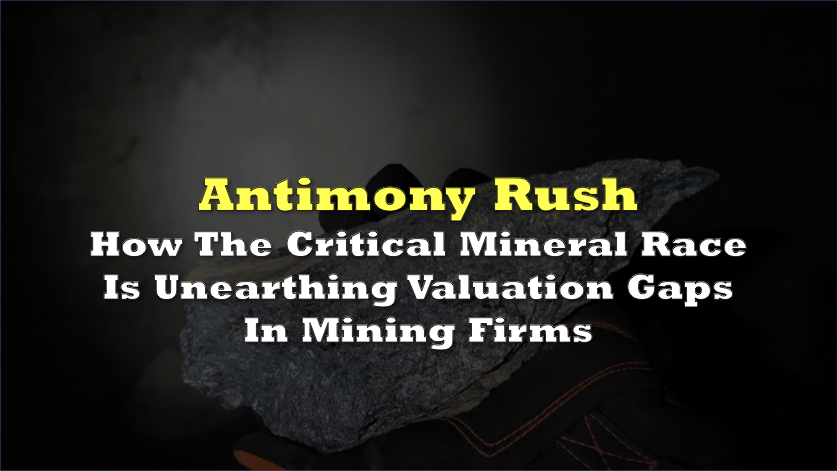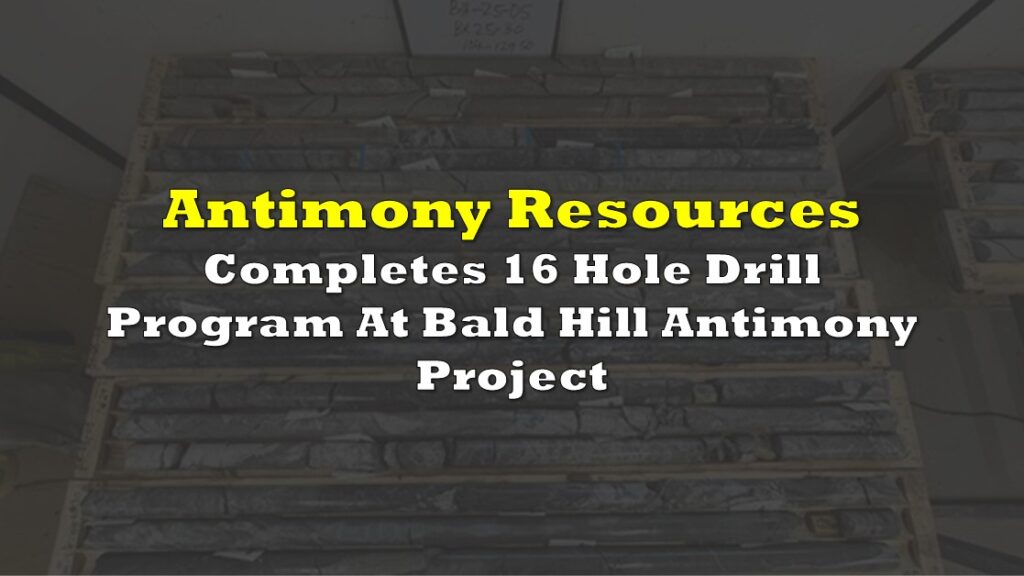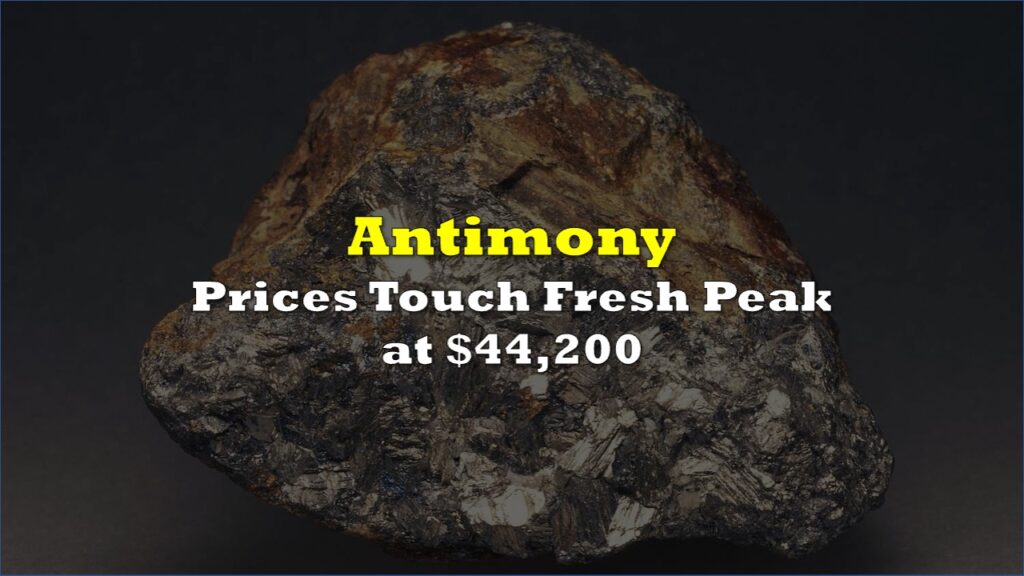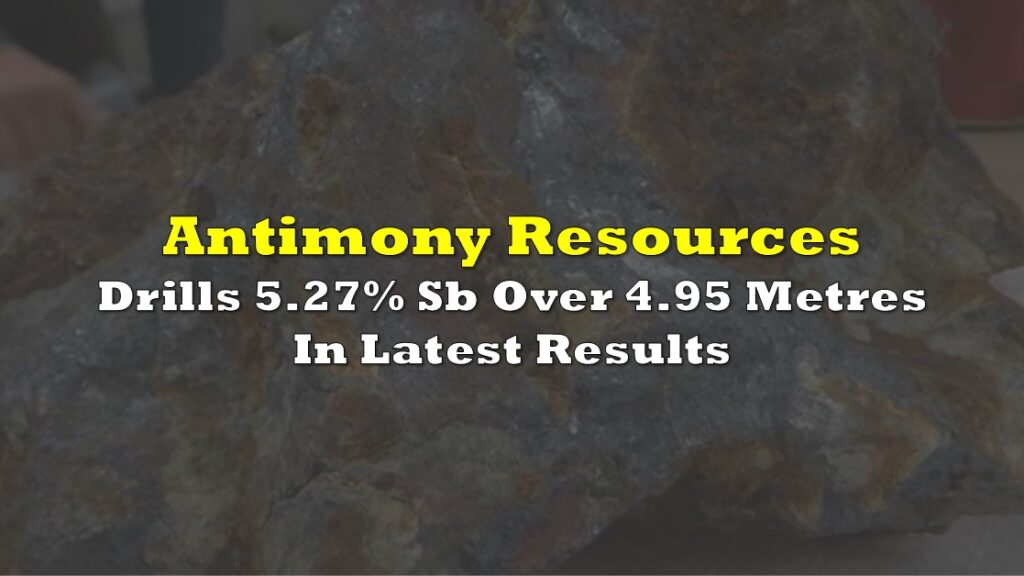FULL DISCLOSURE: Antimony Resources is a sponsor of theDeepDive.ca via a third party.
Alongside its critical minerals push, the White House has accelerated mineral security funding through mining names in the US.
Specifically for antimony, the Trump administration is amid a funding spree following a $245 million contract signed with US Antimony, a $43.4 million grant to Nova Minerals to build antimony operations, and an additional up to $6.9 million to Perpetua Resources on top of a $15.5 million award in 2023 to demonstrate fully domestic antimony trisulfide.
The US Army cites antimony sulfide as a primer ingredient for ammunition. With negligible recent US antimony mine output, Washington is using stockpile purchases and direct funding to onshore supply for munitions, electronics, and energy systems.
With the spotlight on antimony, Antimony Resources (CSE: ATMY) sits at the intersection of grade, jurisdiction, and timing. At an enterprise value of roughly $17.2 million, the company is advancing Bald Hill in New Brunswick, one of the few North American antimony projects reporting multi-percent drill tenor.
A recent third-party investment summary applies EV-per-tonne benchmarks to Antimony Resources and arrives at US$80–US$300 million implied valuation. If government or defense partners come in like how it was for the companies mentioned above, the analysis sketches a US$200–US$400 million “strategic-premium” case, contingent on drilling, metallurgy, and a maiden resource estimate.
The summary starts with a conceptual size for Bald Hill of 40,000–60,000 tonnes of contained antimony, then multiplies that by peer yardsticks: roughly US$2,000 per tonne for early explorers, US$3,000–US$4,000 per tonne for mid cases, and up to US$5,000 per tonne on strategic premium cases. The contained estimate is “based on the scale of mineralization… and the tenor of grades.” It also points to the 2010 technical report that outlined 705,000–1.0 million tonnes at 4.11%–5.32% Sb (or around 30,000–40,000 tonnes contained) as the historical anchor for the low end, while the upper end reflects the author’s view after the new 2025 high-grade intercepts.
The rock justifies the conversation. Historical work mapped stibnite-bearing breccias and veins across roughly 700 metres of strike to 400 metres depth, including intersections up to 11.7% Sb over 4.5 metres and surface assays to 43% Sb. That 2010 report deliberately stopped short of declaring a mineral resource, calling quantity and grade conceptual.
In 2025, new core from Bald Hill reinforced the tenor with intersects like: 14.91% Sb over 3.0 metres (including 28.76% Sb over 1.7 metres), 9.85% Sb over 4.3 metres (including 18.19% Sb over 1.8 metres), 4.17% Sb over 7.40 metres with multiple double-digit sub-intervals, plus a wider 1.10% Sb over 14.5 metres.
“Higher grade means less ore needs to be mined and processed for the same amount of metal — lowering costs, capex, and environmental impact,” said in the investment summary.
Using a 0.60% Sb benchmark (roughly what’s modeled at Perpetua Resources), producing 5,000 tonnes of contained antimony implies moving around 833,000 tonnes of ore. At 4% Sb, the same metal requires around 125,000 tonnes and just around 62,500 tonnes at ~8% Sb.
As of this time, antimony is designated as a critical mineral in the US but supply is concentrated with China and Russia alone exceeding 80% of global supply. Prices in 2025 have hovered near US$50,000 per tonne and the government is executing contracts left and right. The takeaway is simple: North America is paying—literally—for secure antimony feed.
Currently, Antimony Resources is steadily working toward owning 100% of Bald Hill. The deal is an earn-in arrangement with Globex Mining: $2.0 million in cash (of which $100,000 is already paid), 1.1 million shares (of which 250,000 is already issued), and $5.0M in exploration spending (of which $500,000 is already done).
Near term, the company needs to publish lab results from drilling, finish the current financing, and hit the scheduled milestones. The plan hinges on delivering a first official resource estimate and processing tests that show how best to turn the rock into sellable antimony.
Bald Hill is early-stage, but the unusually high grades, the valuation gap, a Tier-1 Canadian location, a clear path to full ownership, and a policy environment actively funding North American supply, puts the company a cut above similar to the names that recently got government backing.
“The disparity is not just large; it’s extreme. Recognition of ATMY’s potential scale, combined with strategic or government involvement, is the most likely catalyst for a major re-rating. The trade is about being positioned before that recognition sets in,” added the summary.
If the story progresses, it will be because results keep landing and boxes get ticked, not because of hype.
“In a world starved for secure Sb supply, [Bald Hill’s] efficiency advantage matters — and is central to why the current valuation gap looks untenable as the story gains visibility,” closed the summary.
FULL DISCLOSURE: Antimony Resources Corp. is a client of Canacom Group, the parent company of The Deep Dive. Canacom Group is currently long the equity of Antimony Resources Corp. The author has been compensated to cover Antimony Resources Corp. on The Deep Dive, with The Deep Dive having full editorial control. Not a recommendation to buy or sell. We may buy or sell securities in the company at any time. Always do additional research and consult a professional before purchasing a security.









